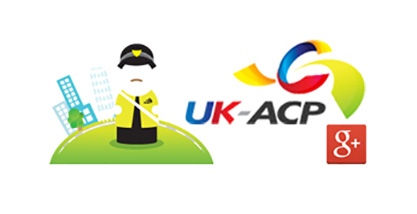Supersonic & Hypersonic Flights
Posted on : 12-04-2016 4:33
Are sound barrier breaking flights the future of the air industry?
Since the retirement of Concorde back in 2003, the aircraft industry has seemed to be rather at a standstill. In fact, most of the airplanes crossing the skies everyday still look much as they did in the 70’s with the exception of the Airbus A380.
Here, we take a look at whether supersonic flights could ever make a comeback and are hypersonic commercial flights even a viable reality?
There have been many leaps forward in technology over the last 10 years and it sometimes feel as though the air industry has been left flailing in the dark looking for a way to move forward. Supersonic and hypersonic commercial flights could be that leap.
There have been several patents awarded for designs for supersonic aircrafts, which promise decreased flight times and incredible speeds. While we may be a few years of actually seeing even so much as a test flight, the prospect of completing a Manchester to New York flight in just 58 minutes is a very appealing one.
What is the difference between supersonic and hypersonic?
The main difference is basically how fast a speed the aircraft will travel. Supersonic speed is deemed as anything travelling between 1.5 Mach and 5 Mach.
This is fast enough to break the sound barrier resulting in a loud sonic boom, which was one of the reasons given for Concorde’s demise. The sonic boom created by breaking the sound barrier creates a deafening crack overhead, which led to Concorde being banned from travelling at supersonic speeds while flying over land.
While Concorde could still reach top speeds whilst over the ocean, this lead to many flight paths being restricted to the aircraft affecting its viability. However, it was still a very popular way to travel over the Channel and across the Atlantic Ocean.
Hypersonic speed is measured at anything travelling between 5 Mach and 10 Mach. Mach is the unit of measurement when looking at the ratio of the speed of the aircraft to the speed of sound.
While there have been several successful unmanned hypersonic test flights, such as the NASA X43 reaching Mach 6 and the US Air Force also conducting their own tests; the problem facing commercial airliners is finding a fuel source which will last a sustained flight at hypersonic speed and also how to keep the exterior of the craft cool as it is exposed to very high temperatures at that speed.
How close are we, realistically?
There have been many positive steps made recently to bring hope to those looking forward to supersonic and hypersonic flights. There are still those who firmly believe that it is never going to happen and flying a commercial aircraft at those speeds is simply an unobtainable dream.
Doug Nichols, CEO of Aerion, is not one of the disbelievers however. His company is one of many who are backing the revival of supersonic flights and he is backing the idea that supersonic flights will once again grave our skies saying; “Aerospace companies, NASA and other institutions are researching ways to quiet sonic booms, and over time, perhaps 10 to 20 years, solutions will emerge”.
Where are these solutions likely to come from?
While flights would still be limited to reaching supersonic speeds over the ocean initially, many companies are looking for solutions to quieten the sonic boom, making over land supersonic speeds a reality. Aerion are working in collaboration with Airbus Group and have begun engineering work necessary to build the AS2 which will be a 20-seater business jet capable of reaching supersonic speeds.
The company estimates that the worldwide market for supersonic business jets could total 600 aircraft over 20 years and they plan to have the first flight of the AS2 to take place as early as 2021.
Two-year’s worth of initial designs were completed this summer by Spike Aerospace resulting in the plans for their S-512 aircraft. Their plans show an aircraft which will have a cruising speed of 1.8 Mach and luxurious surroundings for the 18 passengers it will carry.
The ambitious aircraft will not have portholes; instead it will have cameras all over the exterior of the craft which will stream the high-altitude views onto widescreens for each passenger. Spike are predicting that supersonic flights will be a necessity for global business travellers.
In addition to this, Lockheed Martin have combined their efforts with NASA to put forward the conceptual design for the N+2 which ambitious plans show an entirely new exterior design for an 80-seater airplane.
The exterior shape put forward by the company looks to reduce the sonic boom created by breaking the sound barrier, from a loud crack to a distant thump. The aim is to be allowed fly this style of aircraft over land and the company have tested a model of their design in a wind tunnel and created software which reads how loud the sonic boom created by the craft would be.
“The tools we’ve put in place really open up future opportunities” says Michael Buonanno, Lockheed Martin manager of the NASA N+2 programme.
Supersonic flights may also pave the way for a return of Concorde in the shape of Concorde-2. In July 2015, Airbus were award a US patent for a revolutionary new aircraft concept they are naming Concorde-2. This craft would take off from a conventional runway; however it would leave the ground vertically much like a rocket.
This type of take-off would mean that the sonic boom created by breaking the sound barrier would travel horizontally across the sky, rather than vertically down to the ground. With a top speed of Mach 4.5 (more than twice as fast as Concorde), London to San Francisco would take just three hours and The Pacific could be crossed in a similar time.
Ok, so what about hypersonic flights?
While there are a range of companies planning the next generation of supersonic commercial aircrafts, there are not nearly so many focussing on hypersonic flights. For some, this is still too far ahead to be a reality.
The main research and testing into hypersonic flights has been made by NASA and the US Air Force in an attempted to develop fighter and bomber planes which can reach speeds beyond 5 Mach. The US Air Force did make a successful unmanned, air breathing hypersonic flight in 2013 which lasted 3 minute 43 seconds at hypersonic speed before running out of fuel and crashing into the Pacific Ocean.
This may seem like a failure but a spokesman for the Air Force stated it had been a complete success and they had much to learn from the flight data as they look to research further into the potential of hypersonic flights.
The main issue facing airlines in the development of an aircraft which can reach and sustain hypersonic speeds is keeping it cool enough. A craft flying at hypersonic speed is exposed to incredible external temperatures caused by friction which will rise to thousands of degrees Celsius.
The mission of researchers is to find a material which will stand up to these temperatures out of which they can construct the aircraft. Burkard Esser, a research engineer in fluid mechanics at DLR said: “The objective is to keep the hot part narrow, so that the heat load to the passengers would remain as small as during the normal flight.”
A plane travelling at hypersonic speed would also need quite a substantial fuel supply and this is another challenge facing developers. Many of the current concept designs include large fuel tanks which would span much of the length of the plane, meaning passengers would find themselves sitting next to the fuel takes.
Another problem to consider is the environmental impact such a plane may have on the environment as it will need to burn a substantial amount of fuel while it is in the air. In a time where CO2 output is a huge concern and companies are being asked to become more environmentally friendly, is there even room for such a gas-guzzling aircraft in this day and age?
Hideyuki Taguchi, a researcher in propulsion systems at the Japan Aerospace Exploration Agency, has come up with an interesting solution to both the fuel and heating problem. He said: “We need to develop a propulsion system to be operated from take-off to Mach 5. Flying at the Mach 5 means a very hot structure for the engine, and our solution is to reduce the temperature by cooling hot air by using the very cold fuel.”
Not one to miss a trick, Richard Branson has added his tuppence into the hypersonic discussion saying that his company, Virgin, will concentrate on developing a commercial aircraft capable of flying at 19,000 miles an hour.
He said that once Virgin have set up their space travel programme, they will then develope an aircraft capable of flying from London to Tokyo in just one hour. Virgin have no set plans or designs as of yet but it seems to be in their future.
The planes of the future
With more and more money being put into the development of supersonic and hypersonic planes, it may just be a matter of time before we see these types of flights taking over the skies. The timescale that researchers have given themselves to produce a commercial hypersonic plane is 2040-2050, but it depends very much on technical developments. Supersonic flights will surely once more be a reality quite a bit earlier than this.
UK Airport Car Parks
Whatever the future holds for commercial air travel, it’s sure to be exciting, but you’ll still be able to rely on us to compare airport parking for you to find you the cheapest place to leave your car while you whizz across the globe, however fast you’re travelling.














